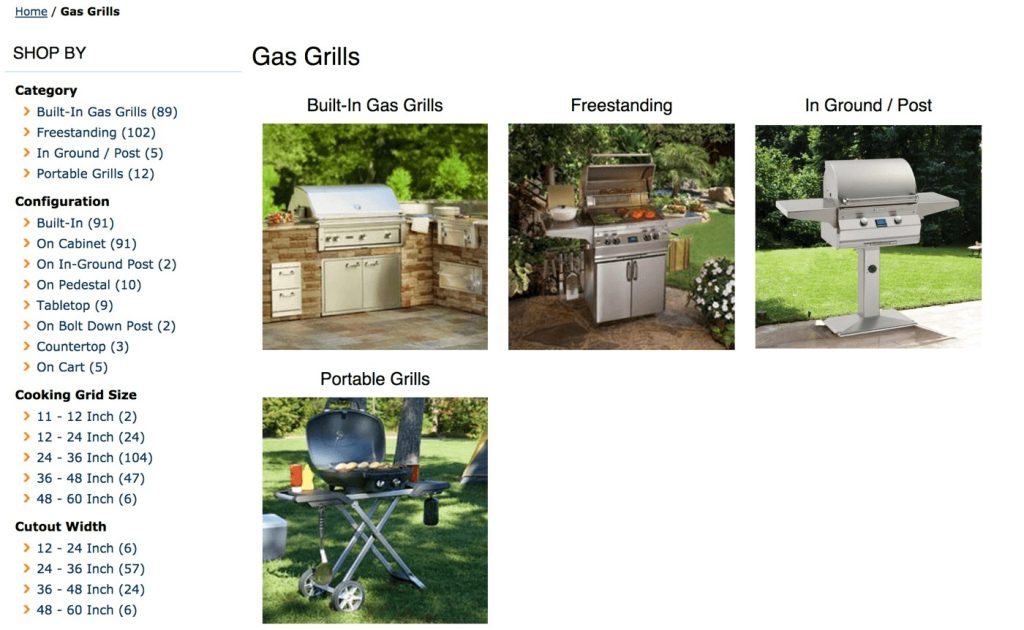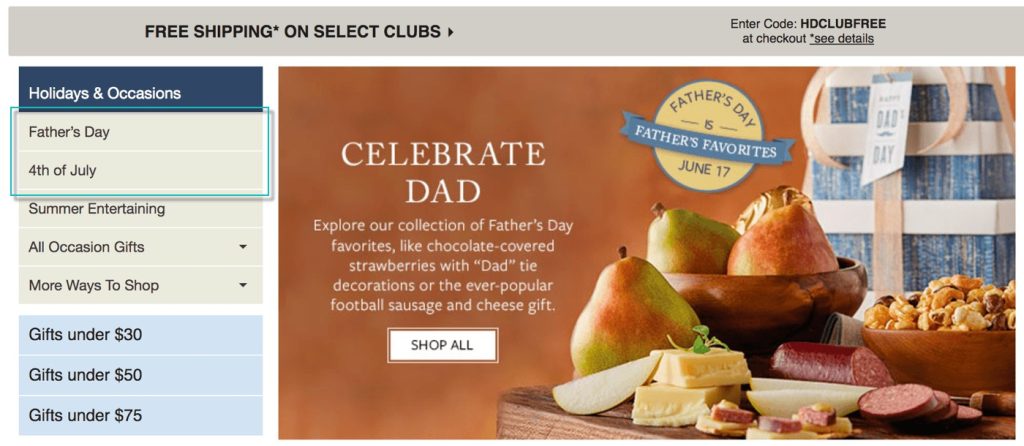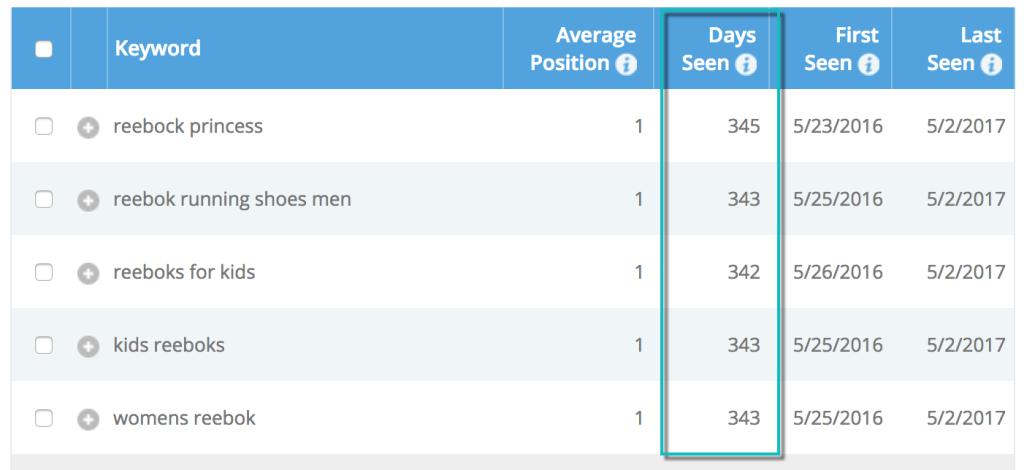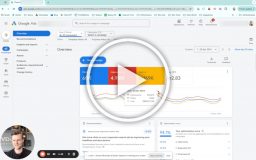There have been written tons of articles about keyword research, however, most articles are focused on keyword research for SEO. The challenge is that keyword research for Google Ads is not the same as for SEO. Sure, there are some common themes, but the way you choose and prioritize keywords is different.
In this post, I’ll go deep into the specific keyword research methods we use to find new keywords for eCommerce stores, what tools we use, and I’ve even included a little cheat sheet to help you streamline the process.
But let’s start with some myth-busting: Long-tail keywords aren’t the holy grail they once were. Between Exact Match not being an exact match and BMM/Phrase being expanded to long-tail keywords and Shopping/Dynamic Search campaigns, then there’s literally not a group of keywords out there that hasn’t been discovered already.
Your best bet is to find the keywords that best match what you’re offering and then outperform your competition.
TL;DR: Our Main Methods
The article is a long one (~25 minute read time), so I recommend using it more as a guide than an A-Z read. In any case, if you just want the overview here it is:
We Work With 4 Areas of Keyword Research Methods:
- Browsing
- Your own website
- Competitor websites
- Amazon/Google Shopping/Pinterest, etc.
- Thinking
- Brainstorming
- Systematic Thinking
- Mining
- Google Search Console
- Site Search,
- Dynamic Search Ads, Shopping Campaigns, Broad Match keywords
- Researching
- Competitor research tools
- Google Keyword Planner
If you do one thing, do this: Review your site search and Google Search.
Types of Keywords: Core, Specific, & Qualifiers
Before we dig in, let’s make sure we understand the different types of keywords that exist. Performing keyword research isn’t about finding the best individual keywords one by one. It’s more about discovering keyword themes you can build upon one after another and come up with great keyword lists.
There are three main types of keywords you will work with:
- Core Keywords
- Specific Keywords
- Qualifier Words (that are added to core keywords)
An example of a core keyword is trail running shoes.
An example of a specific keyword is Air Jordans.
An example of a qualifier word is women’s, new, cheap, promotion, side 8.
The idea behind differentiating the three is that you can typically use a list of qualifier words for all your core keywords. This means you’re not trying to research your way to a keyword list like this:
- women’s trail running shoes
- new trail running shoes
- cheap trail running shoes
Rather, you are trying to do research for three different keyword lists:
- Core keywords – Trail running shoes – Obstacle course shoes – Marathon running shoes
- Specific keywords – Nike Metcon Repper DSX College – Nike Juvenate – Air Jordan Retro 6
- Qualifiers (often referred to as long-tail) – Cheap, new, online, promotion – Mens, womens – Size 8, size 7
Then, you use a tool like MergeWords.com to merge these different keywords into solid keyword lists.
It’s much easier to find different core keywords or qualifiers if you look at them individually rather than together.
Furthermore, if you solely expand within the qualifiers, then you won’t truly expand. Having a broad match modified keyword like +trail +running +shoes will ensure you’re shown for all the various qualifier variations as well. So, if you truly want to expand beyond the search terms you’re currently showing up for, then you need to expand your core and specific keywords.
Note, that showing up for qualifiers and having qualifiers as keywords are not the same thing. Even though the BMM keyword trail running shoes will catch the qualifier keywords, then you’re better off having that keyword in your account, so you can set a specific bid, write ads and link appropriately for the keyword.
Customer Journey Keyword Types
In addition to the general keyword types, it’s worth thinking about your keywords in relation to where they fit in the customer journey.
The following categories of keywords are quite common:
- General: Running Shoes
- Brand: Nike running shoes
- Category: Trail running shoes
- Brand+Category: Nike trail running shoes
- Brand+Series: Nike air zoom running shoes
- Product: Nike air zoom wildhorse 3 running shoes
The various qualifiers (size, color, material, gender, etc.) fit into the different categories above as well.
As an example, trail running shoes for men is still a category search. A Nike Wildhorse 3 size 8 search is still a product search, etc.
Just Starting Out? Start with Keywords from the Bottom of the Journey
If you’re just starting out with your first Google Ads campaigns, I recommend using keywords that represent the latter part of the buyer’s journey. These keywords often convert the best and have a lower search volume. They are, therefore, often the cheapest to get started with and will give you the biggest bang for your buck.
Skip The Work: 80% of Your Keyword Ideas Will Come From This List
While writing this post, it occurred to me that there would be two different types of people reading this blog post:
- People who are interested in the methods of conducting research
- People who just want the end result and be on their merry way
Before we go into the specific methods I recommend for doing keyword research for eCommerce, I’ve included a list of the typical keywords I end up with after the process.
When going through the methods below, you’ll often end up with a list of keywords that in 80% of the cases fit into the following categories:
- Size: big, small, medium OR size 6, size 7, etc.
- Product Categories: Think outside the box here. Trail running can also be an obstacle course. Patio grill can also be outside grill. Get-well gift baskets can also be sympathy baskets.
- Price: $100, below $100, at least $100
- Product Numbers: 10938120, 12039, 103120,
- Product Models: Wildhorse, Air Jordans
- Brands (including others): Nike, Reebok, Adidas, New Balance,
- Competitor Names: Harry and David, 1800baskets,
- Features/Configurations: 8 burners, 6 burners, 4 burners, water-resistant, heat resistant, sweat resistant,
- Material: cotton, flannel | stainless steel, ceramic,
- Color: blue, red, yellow, etc.
- Age: 2 years old, 2 yo, teenager, adult, child, senior, junior, retiree,
- Gender: Men’s, women’s, boy, girl, man, for her, for him
- Seasonality/Events: Easter, Christmas, Presents, Super Bowl, Birthday,
- Info Keywords: Review, Test, etc.
- “Qualifiers”: Cheap, Online, Buy, Free Shipping, Luxury,
The Difference Between Keyword Research for Google Ads & SEO
It’s important to realize that there is a significant difference between the way you tackle keyword research for SEO and for your PPC campaigns.
For SEO, you need to choose the most important keywords and remain focused on them. SEO is a long-term game, so if you choose to optimize using the wrong keywords, then it’ll take a long time before you realize you’re not getting the traffic you expected. Not only will you have wasted a lot of work trying to rank for the wrong terms, but you also may have to wait an extra three to six months (maybe longer) to start ranking for the new terms, which will further increase your losses.
At the same time investment required for adding keywords and seeing if they work out in PPC is barely comparable. Depending on the size of your ecommerce store, you will have to invest a good portion of hours into researching, adding, and assessing keywords, but comparing the hours you’ll spend – versus the months you’ll wait for SEO keywords to rank – it’s still a walk in the park.
The reason I bring this up is because of your mindset. If you’re used to doing keyword research for SEO, then you’re most likely obsessed with search volume and competition. In PPC, this isn’t needed as much. Yes, you need to know when to use a single-worded keyword and when you shouldn’t, etc., but for the majority of cases, you can test your way to success.
So don’t worry too much about checking the search volume for the keywords you’re researching. Focus on building a great keyword list (preferably targeting consumers from the bottom half of the buyer’s journey) and take it from there.
Effective Keyword Research: 4 Distinct Categories
I like to distill keyword research into four different categories:
- Browsing
- Thinking
- Mining
- Researching
Each area has its own strengths and is useful in specific situations. Some have some prerequisites, while others can be performed without any requirements.
Browsing:
In the browsing category, it’s all about getting ideas from random, but deliberate, browsing on other websites. The sources you’ll want to browse to get new eCommerce keyword ideas are:
- Your website
- Your competitor’s Website
- Amazon, Google Shopping
- UberSuggest
Your Website & Your Competitors’ Websites
Spending time on your own website to find new keywords is a commonly recommended tactic. Some people just seem to skip this step. If you’ve written all the content on your website yourself, then it might not be worth checking your own website for keywords.
However, one of reasons it is so important to review your own website for keywords is that it allows you to uncover keywords that you can send traffic to on your website. It’s incredible how well keywords work when you have a landing page that unequivocally matches the searcher’s intent. Furthermore, having your Google Ads keywords on your landing pages will increase your landing page relevance, which will increase your quality score.
The areas you should pay special attention to on your website are the following:
- General Website:
- Product categories
- Product titles/descriptions
- Reviews
- Search/category filters
- Product features
- Auto-suggestions in the site search
- Technical part of your website:
- SEO titles/descriptions
- Keyword meta tags
- Blog:
- Categories
- Tags
- Blog posts
- Comments
Reviewing the filters is an incredible way to find new long-tail keywords. It’s also frequently referred to as “configuration”. Example of search/category filter:
Once you’ve reviewed your own website, it’s time to move to your competitor’s website. They might use get-well gift baskets instead of sympathy gift baskets. Look for other ideas for keywords you hadn’t thought of.
A tip to prioritize the many keywords you can end up with using this technique is to see how prominent the various categories/elements are shown. If your competitor is spending a lot of space on their website drawing their user’s attention to a specific product category, it’s most likely a high revenue category:
Other Websites: Amazon, Google Shopping, Pinterest
These three websites deserve an extra mention. The methods and areas to do keyword research for these sites are similar to the strategy you should use on your own/competitor websites.
The big advantage you get from going to Amazon, Google Shopping, and Pinterest is the sheer number of products they have in their “inventories”. They have to build huge lists of filters, tags, and categories in order to make it easier for consumers to find what they’re looking for.
Trust me. These sites are an absolute goldmine when you’re doing keyword research for eCommerce sites.
UberSuggest
UberSuggest has been going the rounds throughout the digital marketing space for years now, but it’s a very strong tool in your tool chest. It gathers up all auto-suggestions in Google and provides them based on the keywords you input in its search box.
UberSuggest is a great way to find other ideas for what long-tail keywords you should target as well as keywords you should add as negatives in your PPC accounts.
Thinking:
- “Brainstorming”
- Systematic Thinking
Above all else, keep a watchful eye. Think further than what you see. Do you see that many people are searching for beds for 14-year-olds? Then what about using beds for teenagers as a keyword?
“Brainstorming”:
I don’t like to specifically call it brainstorming. Most people think of brainstorming as a group of people sitting in a meeting room with a whiteboard, coming up with ideas. While that can be effective for some, you’re more likely to get good keyword ideas by casually dropping by a coworker’s desk than drumming up the whole team to find an alternative for the word “gas grill” (it’s not Mad Men here, guys). A simple Google search will give you everything you need in that regard.
No, what I’m referencing here is the ability to think of ways to expand upon the keywords you’re finding. You can think of it as taking a semantic match to your keywords (fancy, right?).
- 14 year old = teenager
- Bed for 5 year old girl = Princess bed = Disney bed = Cartoon bed
- Bluetooth speaker = wireless speaker = portable speaker
Synonyms are a great resource for finding other ways of describing the keywords you’ve chosen. Throughout all the steps I list, while you’re browsing, mining, and researching, keep an eye out for ideas. It pays off.
Systematic Thinking (Think: Product Category + Size, etc.)
When managing campaigns for eCommerce stores, a big portion of your success will come from thinking of keywords in a systematic fashion.
Finding the keywords is only one part of the battle. Their actual success rate will depend on how you set them up.
If you just set up keywords one by one or bundle them together in one ad group, you’ll see poor results.
Systematic thinking helps you to get better results, faster.
In practice, this means thinking of ways to take your core keywords and expand them by using modifiers and qualifiers.
A keyword like trail running shoes can be expanded using any number of modifiers:
- size 8
- in black
- for men
- water resistant
- cheap
- long distance, etc.
The opportunities are many. You just have to think about it with a systematic mindset.
Mining:
- Dynamic Search Ads
- Broad Match Keywords
- Shopping Ads
- Google Search Console
- Site Search
If you’re looking for “someone” else to do the work of keyword research for you, then the mining category of keyword research is perfect for you. In this section, I’ll explain more closely how you can let Google do the work for you and avoid the guessing game of keyword research. Some of these methods will cost money, but time is money, so in the end, it’s up to how much you value your time.
Also, let’s not forget that these methods of keyword research should be profitable by themselves, even without thinking of them as keyword research campaigns.
Dynamic Search Ads
One of the best ways to find new, relevant keywords for your eCommerce store is by running a Dynamic Search Ads (DSA) campaign. In short, DSA campaigns contain no keywords but are based on the keywords you have on your website. Google will match pages of your website with search queries on Google dynamically. No work is required (even though it does help) to get this running.
The reason why DSA campaigns are so successful for keyword research is that they’re based on your own website.
In general, DSA campaigns will not trigger active keywords in your Google Ads account. This means, in effect, you can have a DSA campaign that’s showing you what keywords describe your products/categories/pages, but you don’t have in your Google Ads campaigns yet. Especially if you’re not the one who’ve built the PPC campaigns from the beginning, then this can be a powerful way to discover opportunities for growth in your PPC accounts.
DSA Tip: Remember to exclude “info” pages like your shipping rates, blog, and other pages that don’t serve a commercial purpose.
Broad Match Keywords
Broad Match keywords are the next best thing after Dynamic Search Ad campaigns. Google uses machine learning to expand your broad match keywords, which enables your ads to show for search queries that don’t necessarily include your keyword.
An example of this:
- Juicer –> Juice extractor
- Marathon running shoes –> Long distance running shoes
- iPod –> MP3 Player
Sometimes these matches are great, while other times it’s surprising how wrong Google can get it. From a keyword research perspective, broad match keywords are a great way to get new ideas for your keyword lists.
Broad Match keywords have an advantage over your Dynamic Search Ads campaign, in that they can show up for literally anything. There is no landing page they have to match with or other constraints. Therefore, you can often find completely new ideas for your keyword lists.
Start with Bing Ads if You’re Worried About Budget
If you’re looking to do this, but don’t want to risk a huge budget, you can get the same results from running broad match keywords in your Bing campaigns. The search volume is lower, so the risk of your budget going crazy is a lot less.
Shopping Ads
Your Shopping Ad campaign is another place where Google dynamically matches your products with search queries without the use of keywords. That makes it a good source for finding new keywords you’re not currently targeting.
Shopping Ads allows you to find two different types of keywords:
- Generic keywords
- Long-tail keywords
Google will use your product titles to match your products to search queries in order to find what products it will show in the Shopping ads section.
The true magic of Shopping Ads is in finding long-tail keywords.
Finding new long-tail keywords in Shopping Ads can be a treasure trove of new keywords. Just make sure you use the systematic thinking approach to the keywords. It doesn’t benefit you much to add the various long-tail keywords one by one. Instead, look to the long-tail keywords for inspiration to build a big keyword.
For example, if you see the color of a product appear in search terms, then don’t just add that color. Add all the colors across all product-level keywords you have. This is the best way to succeed with keyword research for eCommerce campaigns.
Google Search Console
Organic keywords suddenly disappeared from Google Analytics back in 2011 and they never came back. Fortunately, Google has expanded its Search Console (formerly known as Webmaster Tools) to include more information such as keywords, impressions, clicks, and average position.
If you have decent organic visibility, then you’ll be able to find a lot of good ideas for new keywords you’re not currently using in Google Ads.
It’s pretty straightforward to look through your results in the Search Console, but I have a couple of preferred ways to prioritize what to look for, particularly if this is the first time you’re reviewing the search query list for keyword ideas:
Big Opportunities: Sort your list of search queries by impressions and look for keywords that rank in position +10. These search queries typically have a lot of search volume since they still produce a large number of impressions even though your site doesn’t rank on the first page of Google.
High CTR Search Queries: Search queries with a high CTR will most likely be keywords that are highly relevant for your store. Prioritizing keywords that have a high relevance often translates to a healthy ROI from those keywords.
Both techniques are good, but at the end of the day, you need to go through the entire list for keyword ideas.
Site Search
The search box on your website can be a great way to get keyword ideas for your specific users.
There is a big distinction between what people are searching for on Google and what they’re searching for on your website. By searching on your website, people already know they’ll get results only related to brands/products that you carry. Therefore, users will often use shorter keywords than they would in Google. Be careful with carelessly adding any search queries you see in your site search as keywords in Google Ads.
A great tip for site search is to review your search terms for their conversion rate. You’ll often be surprised how big of a difference there is between the top searches on your store.
Start with the keywords that convert well, but don’t necessarily disregard search terms that don’t convert well. Your site search might just produce poor results for a specific keyword. Use that keyword in Google and link to a specific category or landing page that shows exactly what your users are looking for can be a great way to profit from a seemingly “bad” keyword.
Researching:
- Competitor Research Tools
- Google Keyword Planner
When it comes to actual keyword research, I like to refer this to competitor research tools and the Google Keyword Planner. Both of the tools are essential in order to find quality keywords, but they serve two different purposes:
Competitor research tools are great for giving you an idea of what profitable keywords your competitors are running.
Google Keyword Tool gives you an idea of the general search volume, trends, and competition you can expect from various keywords.
Competitor Research Tools
There are a lot of different competitor research tools for PPC, but my two go-to tools are SEMRush and iSpionage. Both are great for the purpose.
For beginners, I recommend iSpionage, as it has a simpler interface and is therefore easy to get started with. SEMRush is the more comprehensive tool of the two.
The best way to use a competitor research tool is to identify keywords your competitor is showing up for and for how long they’ve been using that keyword. If you’re curious about search volume, etc. then I recommend using Google Keyword Planner instead, as most third-party tools don’t have this data.
What they do have, though, is solid data on what keywords your competitors are running, their average position, what ads they’re running, and what landing pages they’re sending those ads to. However, the absolute best thing is that you can see for how long your competitors have run a specific keyword!
Disregarding those of your competitors who like losing money (very few I assume), you can typically be confident that an advertiser with active keywords in a top position for +3 months is benefiting from that keyword:
Knowing what keywords your main competitors have run over a long period of time before you start your own Google Ads campaigns can be valuable information. Not having to roll the dice completely on all your keywords, but being able to take an educated guess on what keywords will most likely convert for you can help speed up your road to profitability.
Google Keyword Planner
The Google Keyword Planner is Google’s own tool for researching existing keywords and discovering new keywords.
Google Keyword Planner allows you to pull the search volume, CPC, and competitive data directly from Google. That’s information you can’t get anywhere else (if you do it’s guesswork), but know that even the data from Google isn’t actually 100% correct. It’s not wrong, but not 100% accurate either. Take the data with a grain of salt.
That being said, if you’re just starting out and have absolutely no idea what the difference between keywords like running shoes or best running shoes in size 8 for people with flat feet are, then getting a sense for the search volume, CPCs, etc. from the keyword planner is a good first step.
The best method to find new keyword ideas for Google Ads with the keyword planner is the following.
Insert Your Website/Landing Page (or your competitors)
Inserting your website (or one of your competitors) or landing page will generate a list of keywords Google finds relevant for your business.
Insert Your Current Keywords
If you insert keywords you already have in your accounts or ideas that you have, you can get search data and other suggested keywords that go along with them.
BIG CAVEAT: Don’t Just Add
One of the (on paper) best features of the Google Keyword Planner is that you can add keywords directly to your Google Ads campaigns without any additional work. As tempting as it is, don’t do it unless your keywords go straight into a controlled chaos (more on this below) ad group or you can add specific keywords to specific ad groups that match the keyword theme.
Don’t create a mess. Please.
High Competition or Low Competition? Does it Matter for Google Ads?
Many people are searching for the Holy Grail of low competition keywords. You know, the keywords that you can buy for pennies on the dollar and get an incredible ROI from.
Unfortunately, the ship has sailed on that. You can no longer find keyword that no one else uses or that aren’t heavily populated. You can definitely find keywords with less heavy competition, but there are no keywords left with no competition.
But, don’t let that hold you back. In fact, I typically recommend going after keywords that show high competition.
Over the years I’ve seen two fundamentally different types of businesses:
- Great businesses
- Bad businesses
A great business carry great products from high quality brands at competitive prices (not necessarily the cheapest) while serving their customers well.
A bad business has mediocre products from questionable brands, which they try to sell at incomparable rates while not caring about their customers. Wam bam, thank you ma’am.
A great business can use even the most competitive keywords and get good (sometimes, GREAT) returns from it. You’re doing it just as good, if not better, as the rest of the stores advertising for that keyword. So all you need is some PPC magic (aka proper campaigns) and your chances of doing well with even the most competitive keywords are quite high.
Controlled Experiments: The 80-20 Method to Adding New Keywords to Google Ads Campaigns
Once you’ve gone through the various keyword research methods you might be excited to get started with all the new keywords, and you want to do it right.
Have you ever created an incredible campaign with a vast degree of complexity using single-keyword-ad-groups, device-specific campaigns, mobile-focused ad text and carefully selected landing pages – just to see the dreaded Low Search Volume status on 99% of what you just spent hours setting up?
I know I have. And I will, to this day, still get overly confident about a specific setup and run into too many low search volume keywords.
In order to avoid this, I recommend using these “Controlled Chaos” ad groups within your campaigns. The worst thing you can do is take your current campaign structure and start adding your new keywords to see how well they do. All you’ll succeed at doing is:
- Skewing your performance data for your existing ad groups
- Making it confusing for you to find the keywords that you’ve just added (even with labels)
- Lower Ad relevance
- Increasing your account complexity unnecessarily
Controlled Chaos Ad Groups Protects Your Account Structure
My recommendation is to create a “Controlled Chaos” ad group within each campaign. To be honest, I have two names for this ad group depending on the personality of my clients:
- Controlled Chaos
- Volume Tester
I like controlled chaos the best, though. 🙂
With a controlled chaos ad group, the idea is that you add all the keywords you want to test or that don’t really fit in anywhere else, but that at the same time don’t really deserve the work associated with building its own ad group, writing/updating ads, etc.
You will typically use Dynamic Keyword Insertion for a controlled chaos ad group.
Know that if you are in an industry where there are a lot of brand searches or other searches that wouldn’t be acceptable to show in your headline, I recommend splitting your Controlled Chaos ad group in two: one with Dynamic Keyword Insertion and one without.
Final Advice: Don’t Just Pump and Dump
Depending on the size of your ecommerce store, keyword research is a finite game. Most medium-sized stores will approximately start running out of new keywords after ~12 months, depending on who they work with and a couple of other factors.
12 months isn’t a long time. Many advertisers run their campaigns for years.
In the beginning, it’s tempting to just add all your new keywords to your campaigns and if they don’t immediately work out, then you pause them and it’s off to the next keyword group.
This is not an entirely bad approach, as it allows you to find the low-hanging fruit quickly and establish a solid foundation (I actually recommend it), but be careful. Remember to keep track of the keywords you pause. You should definitely try to activate them again in the future and make them work.
The fact is, not all keywords will work for you from the get-go. One client of mine sells rather expensive items. In the beginning, I almost always had a heart-attack when I checked our stats from the last couple of days or the same day. The revenue was low, ROI was negative and it looked like we were throwing our money away. For this advertiser, it takes between three and seven days until the majority of the revenue has been attributed back to the various keywords/ads/campaigns that were running. Allowing keywords to run for too short of a timeframe is a recipe for disaster.
At the same time, there can be many reasons why a specific keyword isn’t showing positive returns. Make sure to check all the various factors (read this article for what to look for before pausing elements in Google Ads) – especially if you have keywords that are generating revenue, but aren’t being profitable. You can almost always make some tweaks to the targeting of that keyword (RLSA, device, demographic, bid, landing page) and keep that revenue, rather than pausing the entire keyword.
Recommended Action: The One Thing You Should Do Now
I always like to distill these long blog posts down to a single actionable step. When it comes to keyword research, you definitely want to go for your long-hanging fruit and the best way to start if you have decent traffic is your site search and Google Search Console. Export these two reports and match them with the keywords you’re already running.










4 thoughts on “Hacks, Methods, and Tools to Google Ads Keyword Research for eCommerce Stores”
Hi Andrew,
Have you written any blog posts talking about the different match types for keywords and which you would recommend using for ecommerce? Thanks for taking the time to produce this content. It really is exceptional. Keep up the great work.
Best Wishes,
Scott
Hi Scott,
Yes, I wrote this a couple of years ago: https://www.searchenginejournal.com/6-ways-to-optimally-use-keyword-match-types-for-adwords-success/64888/
It’s still very much applicable 🙂
Glad you’re enjoying the content!
Very nice blog post. I certainly love this site.
Continue the good work!
Ads keywords are more likely to be not discussed much as SEO once, but ultimately all the keywords provide performance and are utilized optimum; an excellent blog for such an issue is mostly not covered.